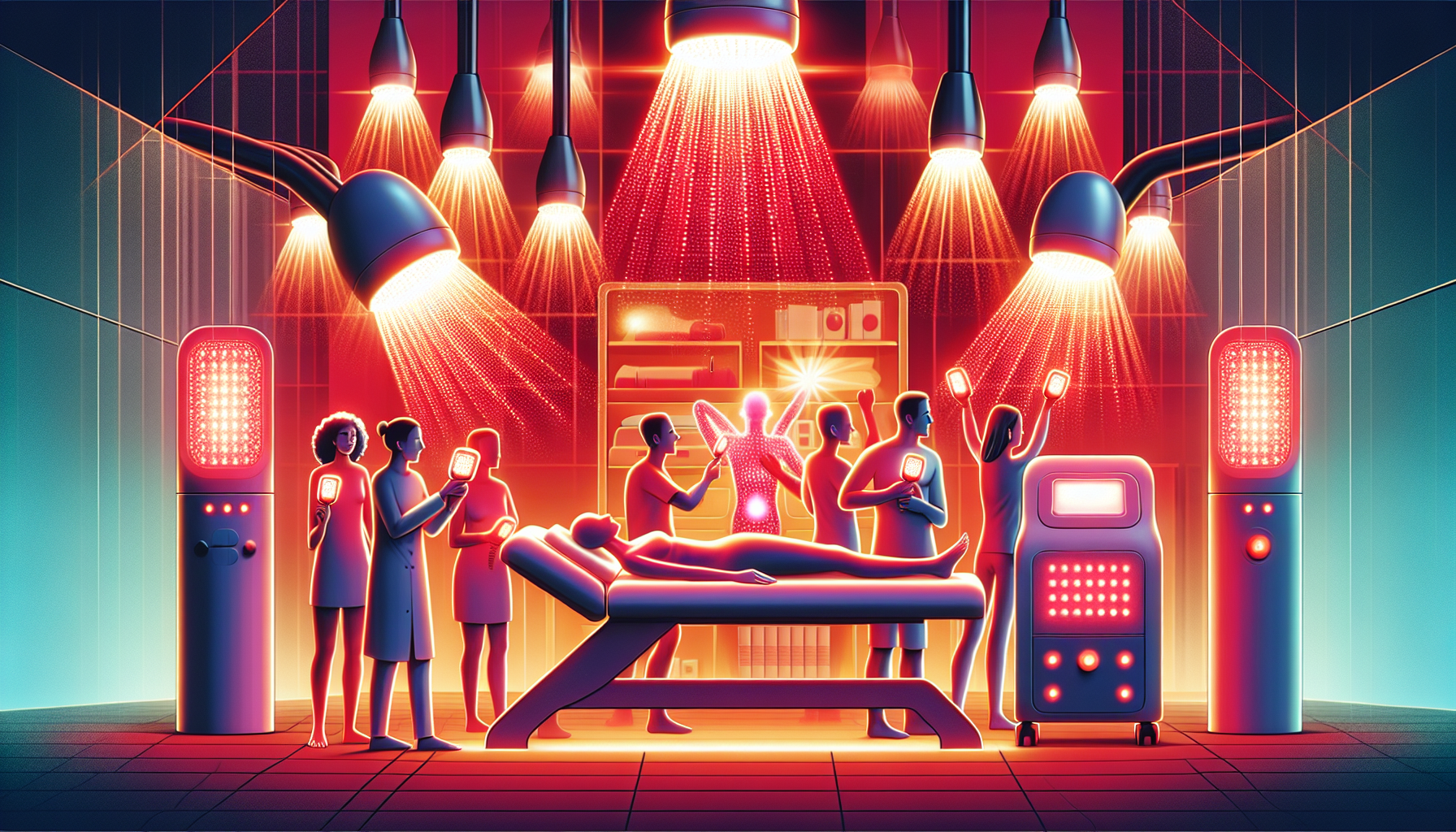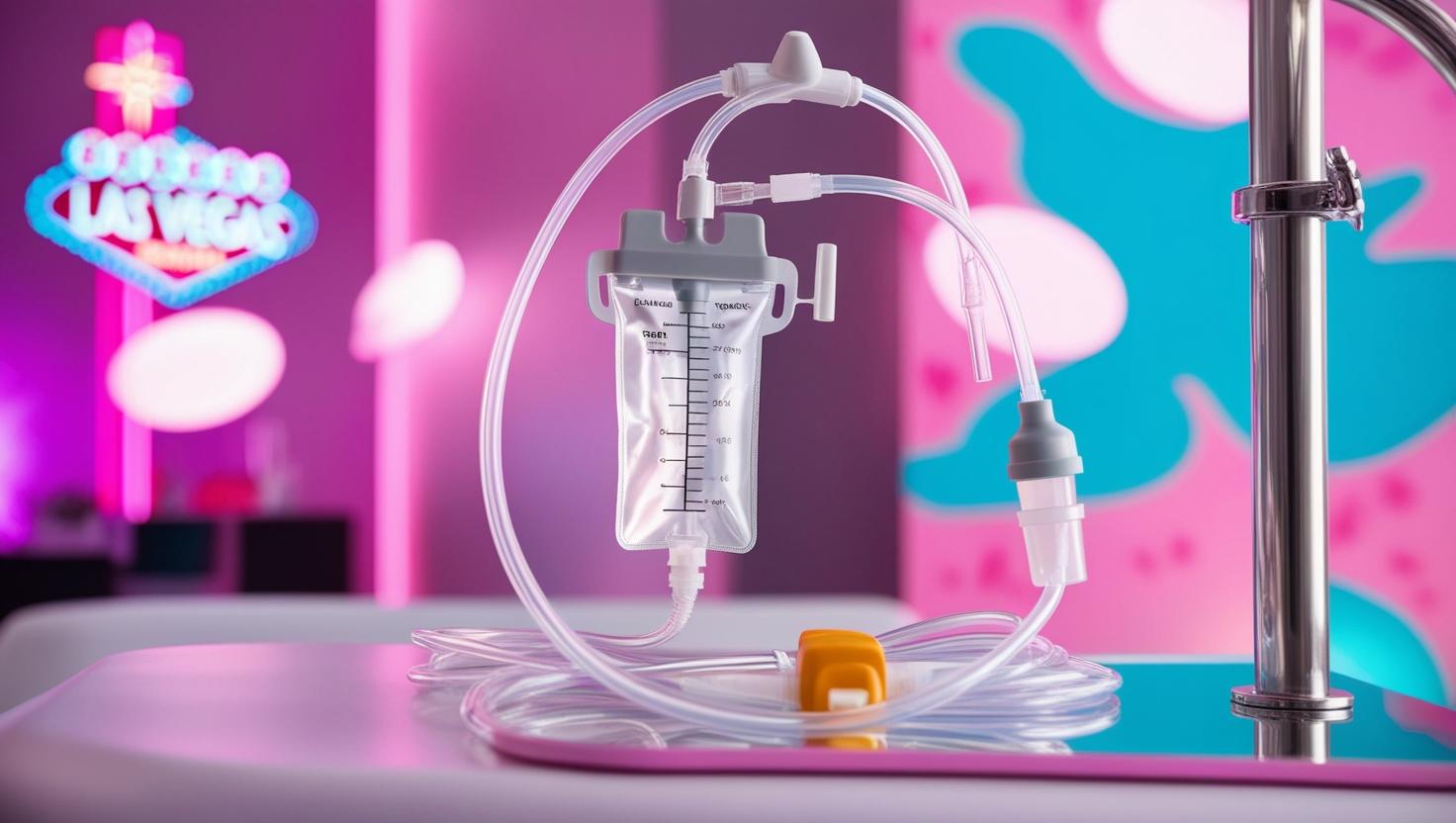Red light therapy for inflammation effectively reduces inflammation by boosting cellular energy and function. This article details how it works and its benefits for managing inflammatory conditions.
Key Takeaways
- Red light therapy enhances cellular function and reduces inflammation by increasing mitochondrial energy production and improving blood circulation.
- This therapy shows clinical promise for various inflammatory conditions, including arthritis, muscle recovery, and skin issues, providing a non-invasive treatment option.
- Proper device usage and consultation with healthcare professionals are crucial to mitigate risks, such as skin burns and contraindications for specific health conditions.
Understanding Red Light Therapy

Red light therapy is a nonmedical method that leverages the power of light to improve various conditions by supporting the body’s natural healing processes. Often referred to as low-level laser therapy, low-power laser therapy, or low level light therapy, this treatment involves the use of specific wavelengths of red and near-infrared light to enhance cellular function and repair. The concept is simple yet profound: by increasing mitochondrial production, red light therapy boosts the energy available to cells, leading to improved health and reduced inflammation.
The devices used in red light therapy, typically light emitting diodes devices, emit light within the 660-670 nm and 830-850 nm range, which are optimal for absorption and efficacy. These wavelengths penetrate the skin, reaching the cells and tissues below, where they stimulate a cascade of beneficial effects. The therapy is generally considered safe and non-invasive when used correctly, although improper use can lead to skin burns or blisters.
Red light therapy influences biological processes through specific light wavelengths, enhancing mitochondrial function, boosting cellular energy, aiding tissue healing, and reducing inflammation. Thus, it appeals to those seeking natural, effective methods to manage pain and enhance overall wellness.
Mechanisms of Red Light Therapy in Reducing Inflammation
Red light therapy’s ability to reduce inflammation is one of its most celebrated benefits. This therapy works through multiple mechanisms at both the local and systemic levels, which collectively contribute to its pronounced anti-inflammatory effects.
Enhancing cellular energy, modulating reactive oxygen species, and improving blood circulation, red light therapy provides a holistic approach to managing inflammation and promoting healing.
Cellular Energy Enhancement
Red light therapy reduces inflammation primarily by increasing ATP production, crucial for energy and cellular processes during recovery. Mitochondria, the powerhouses of our cells, are responsible for producing ATP. When exposed to red light therapy, these mitochondria are activated to generate more energy, reversing the decline in ATP production. This enhanced energy availability supports optimal cell function and regeneration, crucial for reducing inflammation and promoting healing.
Furthermore, it helps cells utilize oxygen more efficiently by minimizing nitric oxide absorption, which otherwise inhibits mitochondrial respiration. This process not only improves cellular health but also speeds up recovery by promoting regenerative processes.
The result is significant inflammation reduction and enhanced healing, making it a powerful tool for managing inflammatory conditions.
Modulation of Reactive Oxygen Species (ROS)
Reactive oxygen species (ROS) play a dual role in the body, contributing to both cellular damage and defense mechanisms. Modulating ROS levels, red light therapy reduces oxidative stress and inflammation. Application of red or near-infrared light activates the NF-kB transcription factor in normal cells, critical for cellular responses to inflammation. This activation helps in managing inflammation and promoting healing.
Furthermore, photobiomodulation has been shown to reduce markers of oxidative stress and pro-inflammatory cytokines, enhancing the body’s antioxidant defenses. Encouraging faster antioxidant production, red light therapy mitigates ROS damage, reducing inflammation and improving cellular health. This balance between ROS production and antioxidant response is key to its anti-inflammatory benefits.
Impact on Blood Circulation
Another crucial factor in red light therapy’s effectiveness is its impact on blood circulation. Enhanced blood flow ensures that oxygen and essential nutrients are efficiently delivered to tissues, while metabolic waste products are removed more effectively.
Enhanced circulation supports tissue healing and reduces inflammation, making red light therapy a comprehensive approach to managing inflammatory conditions.
Clinical Applications for Inflammatory Conditions

The clinical applications of red light therapy for inflammatory conditions are vast and varied. This therapy shows promise in enhancing tissue healing and reducing inflammation in joint pain, muscle recovery, and skin conditions through improved blood flow and cellular function.
Whether dealing with chronic inflammation or acute injuries, red light therapy offers a versatile and effective treatment option.
Arthritis and Joint Pain
For individuals suffering from arthritis, red light therapy can be a game-changer. Conditions like rheumatoid arthritis and osteoarthritis, which are characterized by chronic pain and inflammation, can be effectively managed with this therapy. Lowering inflammatory markers like TNF- and interleukins IL-1beta and IL-8, red light therapy reduces joint stiffness and soreness. This leads to improved joint flexibility and overall mobility, offering significant relief for those affected by these debilitating conditions.
The benefits of red light therapy extend beyond just arthritis. It also aids muscle injuries, connective tissue disorders, and other inflammatory conditions. Enhancing blood flow and reducing muscle spasms, it provides comprehensive pain relief and promotes healing, invaluable for managing joint pain and improving quality of life.
Muscle Recovery and Performance
Athletes and fitness enthusiasts benefit greatly from red light therapy, which reduces delayed onset muscle soreness (DOMS) and enhances muscle recovery. Increasing circulation, red light therapy delivers oxygen-rich blood and essential nutrients to muscle tissues, promoting healing and repair. This reduces muscle soreness and speeds recovery, allowing for more effective training and performance.
Soft laser therapy, a form of red light therapy, effectively improves muscle tissue recovery by enhancing blood flow. Cold laser therapy reduces muscle soreness and improves circulation, leading to faster, more efficient recovery, making it valuable for any fitness regimen.
Skin Conditions
Red light therapy is also a powerful treatment for various skin conditions. Conditions like psoriasis and acne, often accompanied by inflammation, can be managed effectively with this therapy. Reducing inflammation and promoting healing, red light therapy improves skin health and appearance. This makes it an attractive option for individuals looking to treat skin conditions without the use of harsh chemicals or invasive procedures.
Animal models have demonstrated the effectiveness of red light therapy in alleviating inflammation in diverse tissues, further supporting its use for skin conditions. For chronic conditions or occasional flare-ups, red light therapy provides a gentle yet effective solution for healthy, vibrant skin.
Red Light Therapy Devices and Treatments

The red light therapy device market is diverse, offering options for professional and at-home treatments. These devices range from handheld units for targeted therapy to full-body beds designed for comprehensive treatment.
Knowing the types of devices and their applications is crucial for choosing the right treatment for your needs.
Whole-Body Red Light Therapy Bed
Whole-body red light therapy beds offer a unique, comprehensive treatment approach. These beds expose the entire body to red LED lights, promoting healing and reducing inflammation across all tissues. This exposure targets local and systemic inflammation, making it a versatile led light therapy treatment option.
Body Balance Medical in Las Vegas offers a state-of-the-art whole-body red light therapy bed designed to help with inflammation, weight loss, and anti-aging. Sessions last about 10 minutes and require no downtime, making them convenient for busy individuals.
Benefits include improved skin health, weight management, and overall wellness.
At Home Devices vs. Professional Treatments
Choosing between at-home devices and professional treatments for red light therapy is significant. Home devices are typically less powerful than professional ones, affecting their efficacy. Home devices are more convenient and cost-effective but often require longer treatment times and may not deliver results as quickly as professional treatments.
Professional red light therapy treatments, on the other hand, are generally ten times more powerful than home devices, leading to quicker and more noticeable results. However, they can be more expensive and less convenient due to the need for frequent clinic visits. Ultimately, the choice depends on your needs, budget, and lifestyle.
Research and Evidence

The effectiveness of red light therapy is backed by a growing body of research. Numerous studies and clinical trials demonstrate its potential in reducing inflammation and promoting healing across various conditions.
Knowing the current state of research can help you make informed decisions about incorporating this therapy into your wellness routine.
Clinical Trials and Studies
Clinical trials are crucial for evaluating the efficacy of red light therapy. An increasing number of studies explore its potential in treating various inflammatory conditions. While promising, the research often faces limitations due to small participant groups and inconsistent study parameters. This underscores the need for more standardized and comprehensive studies to confirm red light therapy’s full potential.
Despite limitations, the general outcome of photobiomodulation therapy in clinical practice indicates a profound anti-inflammatory effect. For those with specific health conditions, consulting a healthcare provider before starting red light therapy is crucial. Ongoing research aims to solidify our understanding while ensuring the safety and effectiveness of this innovative treatment.
Expert Opinions and Reviews
Experts in the field suggest that the effectiveness of red light therapy can vary significantly based on treatment parameters, including wavelength, intensity, and duration. Healthcare professionals emphasize standardized protocols to ensure consistent, reliable results. This standardization is crucial for the widespread acceptance of red light therapy in mainstream medicine.
While widely acknowledged, experts agree that more rigorous clinical evidence is necessary to validate red light therapy’s potential. This will help establish its efficacy and ensure that patients receive the most benefit from their treatments.
As research evolves, the future of red light therapy looks promising, with the potential to revolutionize inflammation management and healing promotion.
Risks and Considerations
Like any treatment, red light therapy has its own risks and considerations. Generally safe, improper use or misunderstanding of the therapy can lead to adverse effects.
Being well-informed about these risks ensures safe and effective treatment.
Potential Side Effects
Potential side effects include skin burns, blisters, and redness, especially if devices are used improperly or for too long. Burns often result from device malfunctions or prolonged exposure, underscoring the importance of adhering to recommended guidelines. Proper eye protection is crucial to prevent possible eye damage. Using protective eyewear during sessions, while not mandatory, can prevent discomfort and safeguard against potential eye injuries.
These side effects highlight the necessity of following proper protocols and using quality devices. Conducting red light therapy sessions safely can significantly reduce adverse effects and enhance treatment benefits.
Who Should Avoid Red Light Therapy?
While red light therapy is generally safe, certain individuals should avoid it due to potential risks. Those with a history of cancer should avoid red light therapy due to concerns it could potentially stimulate cancer cell activity. Individuals with specific health conditions should exercise caution and consult a healthcare provider before beginning treatment.
Proper eye protection is essential to prevent damage during red light therapy sessions. Those with contraindicating health conditions should prioritize safety and seek professional advice before treatment. Understanding these considerations ensures that red light therapy is a safe and effective option for you.
How to Get Started with Red Light Therapy
Starting red light therapy involves selecting the right device and understanding its effective use. Consider whether you need a small handheld device for targeted areas or a larger unit for extensive treatment. Home devices are easier and more affordable but less powerful than professional treatments.
For optimal results, start with treatments lasting 10 to 20 minutes, three to five times a week. Before beginning, familiarize yourself with possible side effects and risks associated with the treatment. Following these guidelines maximizes the benefits of red light therapy while minimizing potential risks.
Book Your First Red Light Therapy Session Today!
To experience the benefits of red light therapy firsthand, consider visiting Body Balance Medical. Our anti-aging clinic offers whole-body red light therapy beds designed to promote healing and reduce inflammation.
Contact Body Balance Medical to schedule a session and embark on your journey towards improved health and wellness.
Summary
Red light therapy is a promising treatment that harnesses the power of light to reduce inflammation, enhance cellular energy, and promote healing. By understanding its mechanisms, clinical applications, and the research supporting its efficacy, you can make informed decisions about incorporating this therapy into your health regimen. From treating arthritis and muscle soreness to improving skin conditions, the potential benefits of red light therapy are vast and varied.
As with any treatment, it is important to consider the risks and ensure proper usage to maximize benefits and avoid side effects. With the right approach, red light therapy can be a valuable tool in your journey towards better health and well-being. Explore the possibilities and take the first step towards a brighter, healthier future.
Frequently Asked Questions
What is red light therapy?
Red light therapy is a nonmedical treatment that utilizes specific wavelengths of red and near-infrared light to improve cellular function, reduce inflammation, and facilitate healing. Its application can lead to enhanced recovery and overall wellness.
How does red light therapy reduce inflammation?
Red light therapy effectively reduces inflammation by enhancing mitochondrial function and increasing ATP production, which boosts energy in cells and improves blood circulation. This intricate process helps to modulate oxidative stress, ultimately leading to reduced inflammation.
Can red light therapy help with arthritis?
Red light therapy can effectively manage arthritis by alleviating pain and inflammation, enhancing joint flexibility, and reducing inflammatory markers. It serves as a beneficial adjunct treatment for those suffering from this condition.
Are there any risks associated with red light therapy?
Yes, red light therapy carries risks such as skin burns, blisters, and potential eye damage if not used correctly. It is crucial to follow appropriate guidelines and use eye protection to mitigate these risks.
How do I start using red light therapy?
To begin using red light therapy, call Body Balance Medical today!






